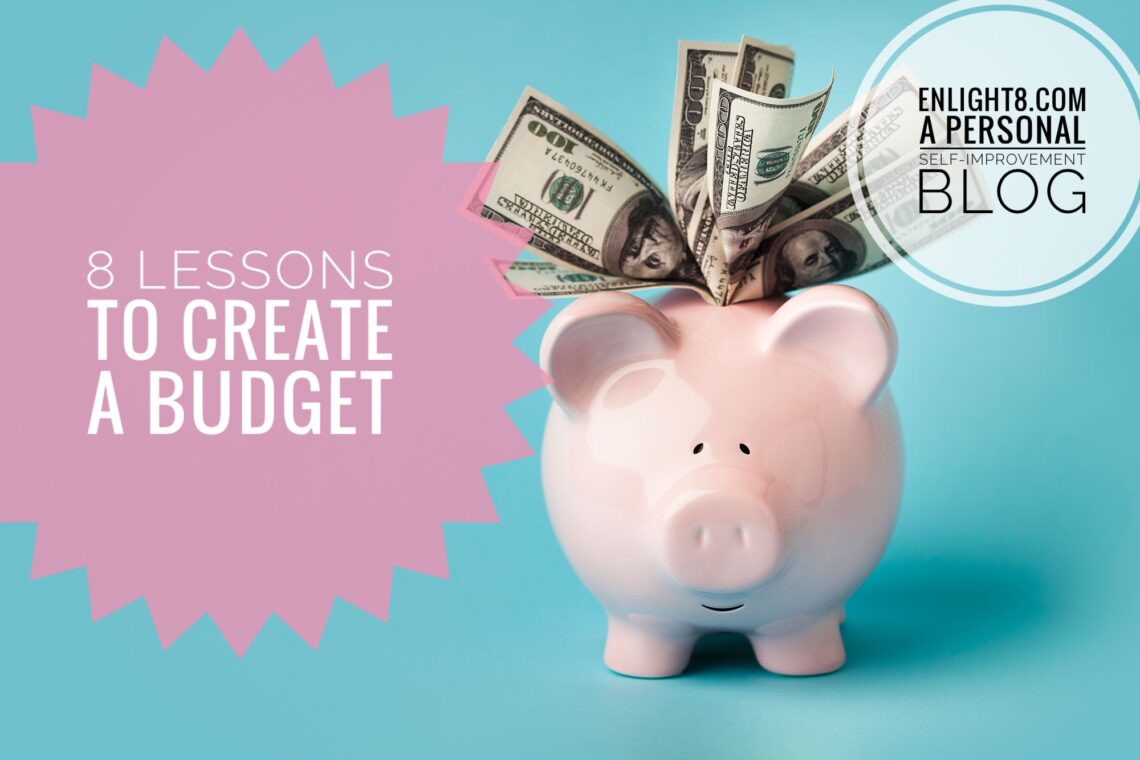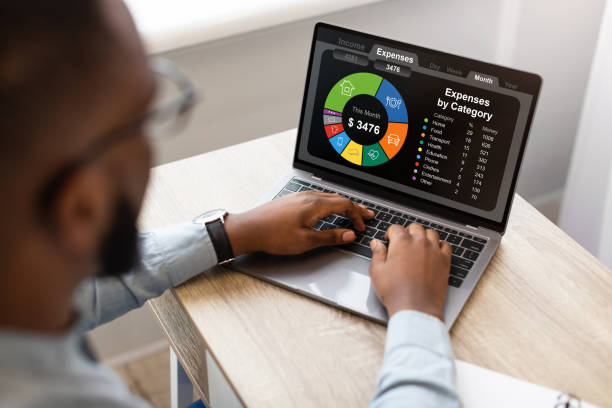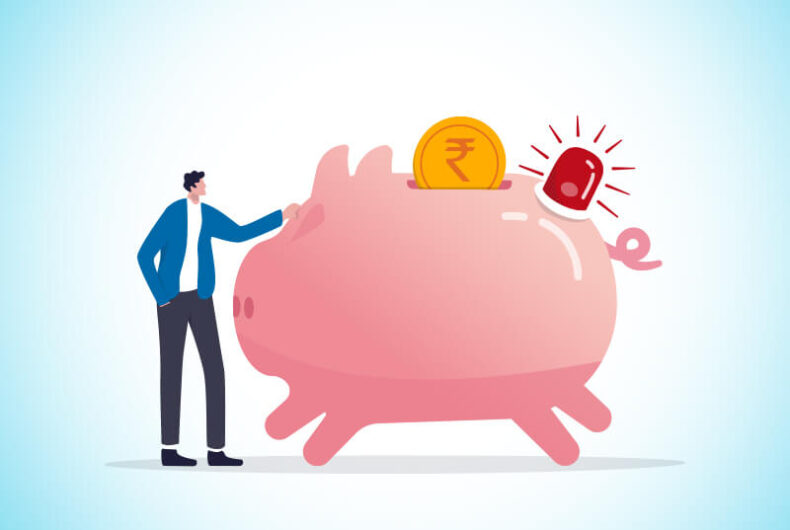
8 Lessons to Create a Budget
When it comes to the most vital skills in personal finance, I think learning how to create a budget is at the top. Whether you’re a college student, a stay-at-home parent, or a young professional, budgeting is a critical aspect of achieving financial success.
I have learned a lot about personal finance and have consolidated my knowledge in this blog, here are 8 lessons to create a budget like a personal finance expert. Furthermore, know that how you manage your money by creating a budget can mean whether you become successful with money or not. Therefore, let’s start first with the first point, and that is having a goal.
1. Set a Financial Goal
The first and foremost thing we need to do when we start a budget is to set a financial goal. How exactly are we determining our financial success? Your financial goal is how you envision where you want to be in 10 years or more. Are you saving for retirement? Are you saving to buy your future home? Are you saving to pay off your student loan? What are your goals in 5 years, 10 years, or more?
We can write down those goals to start, and we can use those goals to determine how we budget. The budgeting process could include savings for a down payment for a home or setting aside a comfortable emergency fund for a rainy day. We need to start by writing down our financial goals.
Also, check out my article on the “8 Money Rule of Thumbs That Will Make You Rich” as an inspiration for writing your financial goals.
2. Start By Tracking Income and Expenses
The first skill for budgeting includes tracking our income and expenses. When we track our income, we create and list out all our sources of income. For many of us, it may be simple since our income comes from one place, our job. For others, you may be running businesses. We need to think about income sources coming from those sources. The next step after this is tracking expenses. Expenses are money spent or going out. That means it can include payments for rent or mortgage, car payments, student loans, internet expenses, groceries, and more. Now that we have tracked income and expenses we can all review and determine what expenses we can cut down or whether we need to earn more money to balance our income-to-expense ratio.
Check out this article, “8 Tips to Becoming Smart About Money.”
3. How to Track Income and Expenses
There are various ways to track your income and expenses. I track mine using good old-fashioned Excel and have recently converted that to Google sheets. Here are various tools and options for tracking income and expenses.
There are several ways to track your income and expenses, including
- Using a budgeting app: Many budgeting apps available can help you track your income and expenses by connecting to your bank account and automatically categorizing transactions.
- Using a spreadsheet: You can create a spreadsheet in programs like Excel or Google Sheets to manually enter your income and expenses and track them over time.
- Using a notebook: You can use a notebook or a physical ledger to write down your income and expenses.
- Financial software: You can use financial management software like Quicken or Mint, which can help you track your income and expenses and create a budget.
- Using a financial advisor: You can also consult a financial advisor who can help you track your income and expenses and create a financial plan.
Ultimately, the best method for tracking your income and expenses will depend on your personal preferences and the level of detail you need to track.
Tracking your spending: Keep track of your spending throughout the month to identify areas where you may be overspending.
4. Save Money and Have an Emergency Fund
I have trumpeted the wisdom of having an emergency fund in many other posts like this post. Furthermore, an emergency fund set aside for unexpected expenses is an invaluable way to have some form of self-insurance.
An emergency fund is one you can set up in regular savings or checking account, but it is an account you never touch unless it is an emergency. Therefore, an emergency could be that you need to pay a medical bill suddenly, or you experience a job loss, or a major house or car repair where you need the cash immediately. An emergency fund must be only used for “emergencies,” and the idea is to protect ourselves from these possible financial pitfalls.
Here are important ways you can set up an emergency fund.
- Calculate your emergency fund goal: To start, have at least $1,000 in an emergency fund, then calculate your typical three to six months of living expenses. For example, if your living expenses, including your rent, food, and other expenses, tally up to $3000 a month for a six-month emergency fund, you should save $18,000.
- Ensure your emergency fund is set up somewhere you cannot touch. I recommend setting it up where you can yield a high-interest rate but keep it liquid. Many online banks with high-interest rate savings or checking accounts could be ideal places to save an emergency fund.
- Regularly put aside money to fund your emergency fund. Start with $1,000 and work toward your goal.
- Ensure that the emergency fund is always liquid and easy to access. This means it should never be something like stocks where you have to sell off the stocks to get money. An emergency fund should be held in currency or cash.
5. Save For Retirement
Saving for retirement is critical when setting up a budget. The money we save up for our future selves lives in retirement accounts. Here are ways we can save for retirement as part of a budget.
- If you have an employer-sponsored retirement plan such as a 401(k) or equivalent, make sure you participate, especially if the employer matches your contribution. This is free money that they are giving away! Many employers offer 401(k) plans and retirement savings options. A percentage of your contribution could be matched. If so, take the match amount at the very minimum. However, to be successful, a retirement savings rate of 10% or above is a great starting point.
- Take advantage of individual retirement accounts such as traditional IRAs and Roth IRAs. Traditional IRA contributions are tax-deductible, but withdrawals in retirement are taxed. Roth IRA contributions are not tax-deductible, but withdrawals in retirement are tax-free. Preferably, a Roth IRA is the way to go, as you pay the tax now rather than in the future, where taxes may be a lot more. .
6. Reduce Expenses
Find ways to reduce your expenses, cutting back on subscription services, entertainment, dining out, and shopping. Here are ways we can reduce expenses.
- Follow your budget. Your budget can identify areas where you overspend and use this information to reduce your expenses which is money coming out. Be a defensive saver.
- Find unnecessary expenses and cut them out, there may be subscription services you no longer need, or you may be overpaying for things you don’t use.
- Find better deals. There are many ways to compare services or items. There are discount codes online that could help you save. Make sure you do your research.
- Negotiate your bills. If you ask, bills such as medical and others can be renegotiated. Find a way to get a better rate on your phone or internet subscription. For example, I had to go to a competitor that offered lower prices and eventually got another deal for returning customers.
- Reduce daily transportation costs, find ways to do carpooling, or perhaps consider taking public transportation instead of using services like Uber.
7. Avoid Lifestyle Inflation
Often, as we make more money, we also upgrade our lifestyle. This is called lifestyle inflation. Our human tendency is to increase our expenses as we increase our income. Lifestyle inflation means we save a lot less, and that increase in income did not contribute to increasing our net worth.
Here are ways we can avoid lifestyle inflation and stick to our budgets.
- The budget we create is the key here, and it helps us identify areas where we overspend. We must then use this information to reduce expenses and follow our plan.
- Prioritize saving and investing. When you prioritize saving and investing, you can set a goal to invest a certain amount every month and year. A goal to save for the future is the hallmark of successful people.
- Avoid lifestyle inflation expenses. I find that those people who make more money upgrade their lifestyles across the board. They drive more expensive cars and pay for expensive things that don’t add much to their happiness. Don’t spend your money. Save it instead—no need to impress anyone but yourself.
- Invest in yourself. Investing in yourself can mean getting more education or taking the time to self-care. Invest in your well-being, and you will become the best possible daily.
- Pay down debt. Any extra money you find should be used to get rid of debt if you have any. The best way you can be free is to be financially free. And that means having no debt.
8. Read great books on budgeting and personal finance.
There are many classic and highly recommended books on budgeting and personal finance. Investing in reading and educating yourself is the best way to start on the road to financial freedom. Here are excellent books that I recommend.
- “The Total Money Makeover” by Dave Ramsey: This is the ultimate book I read first to learn how to budget, pay off debt, create an emergency fund, and invest my money wisely. Dave has written one of the best guides and a classic personal finance tome.
- “Rich Dad, Poor Dad” by Robert Kiyosaki: Robert wrote this book to change mindsets. The rich have a different mindset than the poor, and the differing perspectives on money, assets, and investing are eye-opening. I highly recommend this book.
- “I Will Teach You To Be Rich” by Ramit Sethi: This is a somewhat modern book on personal finance, but it offers excellent advice on saving, investing, and creating long-lasting wealth from an author who is not afraid of spending money for the right reasons.
- “Your Money or Your Life” by Vicki Robin and Joe Dominguez: This book offers a 9-step program for transforming your relationship with money and achieving financial independence.
- “The Simple Path to Wealth” by JL Collins: This book provides a straightforward approach to investing, saving, and creating wealth, focusing on the power of compounding and low-cost index funds.
- “The Automatic Millionaire” by David Bach: This book offers practical advice on automating your savings and investing to achieve financial independence without thinking about it.
These books offer different perspectives on personal finance and can be helpful in creating a budget, managing expenses, and creating wealth.












